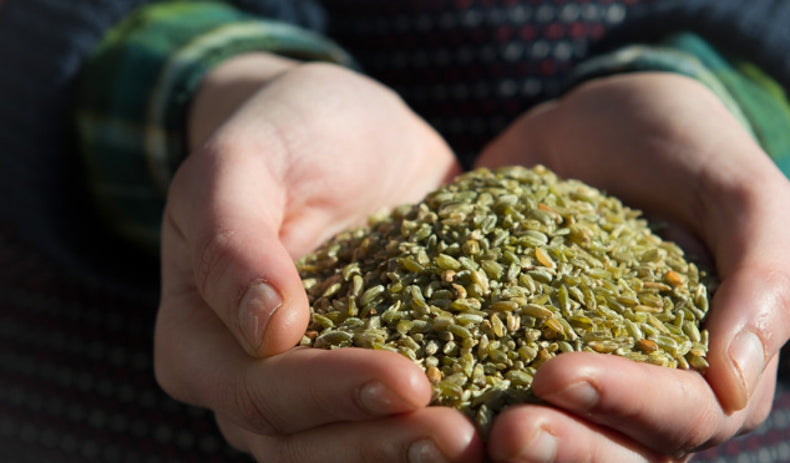What You Need To Know About Freekeh

In 2300BC people in an Eastern Mediterranean town were under attack, so the story goes. They were forced to pick the wheat they were saving for the summer harvest while it was still young and green. But the grain stores were set alight. When the townspeople went to assess the damage, they discovered that when they rubbed the burnt wheat, the grains inside were still edible, and had a deliciously smoky, nutty taste. And so the grain became known as ‘the rubbed one’ – or freekeh.
Freekeh refers to this process, rather than variety of grain. It can be made from barley or kamut – though it’s most commonly made with durum wheat. The first part of the process involves harvesting and pulling the grain from the stem when it’s green and moist. But the wheat’s softness means that it just crumbles if threshed with modern combine harvesters. To stop the mechanism from clogging up with pulverised young wheat, it needs a specially designed head – though most commonly freekeh is still picked through by hand.
Freekeh means ‘the rubbed one’ in Ancient Aramaic
The hardest part of the freekeh-making process is preventing the grain from aging once it has been picked. This is done by immobilizing the enzyme in the grain using fire and air. To do this, the freekeh has to be heated to the exact right temperature. Not too much – or the grain will cook. Not too little – or it will continue to mature when it’s stored. Traditionally, the chaff is piled onto heaps of straw, which are then set on fire. Though the process is slowly being modernised with finely controlled kilns to ensure that the roasting is stopped at the precise moment.
Preserving the grain at the point that it’s richest in vitamins, fibres and minerals has meant that freekeh has been lauded as the new super food. Somewhat ironic that to hit the headlines after lurking in the shadows for so long. Jamie Oliver has called it his “new favourite superfood” and Oprah Winfrey applauded its multiple health benefits.
Despite the recent wave of interest, the best recipes are often the oldest. Freekeh is often cooked in simmering water or stock, and then used to stuff quail, dove and pigeon. It’s made into hot pilaf and cold tabbouleh and used as a way of introducing protein to a bowl of soup.
Buy Freekeh online at Sous Chef


